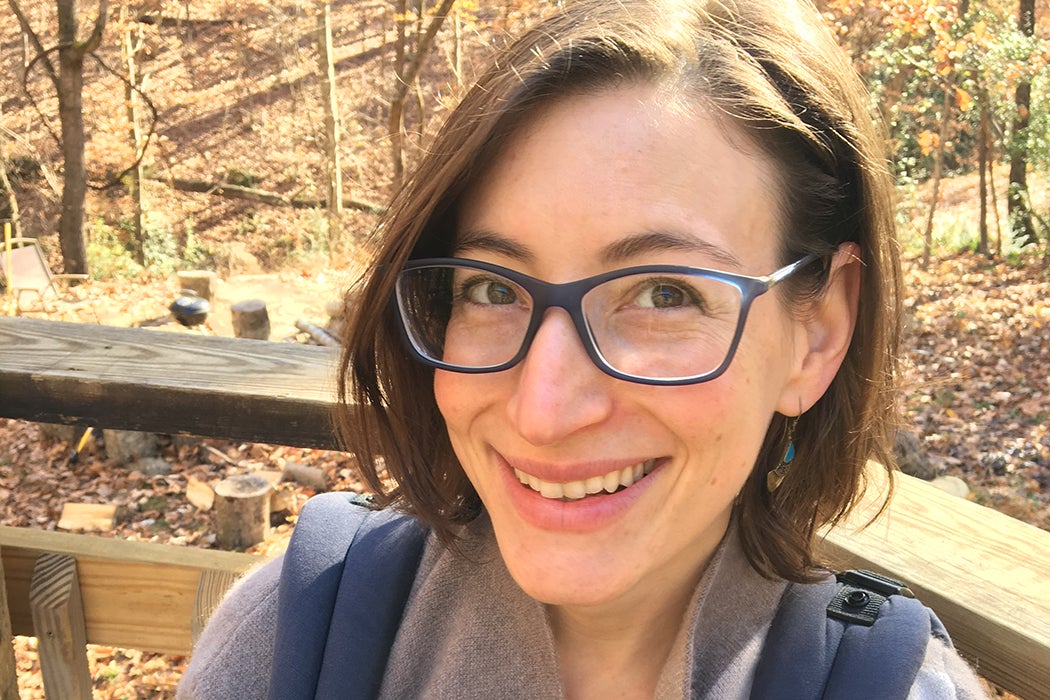Welcome to Ask a Professor, our series that offers an insider’s view of life in academia. This month we interviewed Gabrielle Berlinger, a professor of American Studies and Folklore at the University of North Carolina Chapel Hill and the author of the new book Framing Sukkot: Tradition and Transformation in Jewish Vernacular Architecture from Indiana University Press. Here on JSTOR, she is the author of “From Ritual To Protest: Sukkot in the Garden of Hope” in Buildings & Landscape: Journal of the Vernacular Architecture Form. JSTOR has a justly-deserved reputation for being a great repository of past scholarship and early journal content, and Gabrielle’s article demonstrates that JSTOR also hosts fascinating, cutting-edge material as well.
Alex Golub: What’s a factoid/tidbit about your field that most people don’t know?
Gabrielle Berlinger: When I tell people I’m a folklorist, they say that I must be a great storyteller and ask me what fairy tale or legend is my favorite. I have to explain that I don’t specialize in these well-known narrative traditions, and that Folklore Studies actually encompasses many different expressive traditions—verbal, material, and performative—that are passed down through the generations by oral transmission or practice. Folklorists study song, dance, religious and ritual performance, cooking, dress and body adornment, occupational labor, artistic production, architecture, and many, many more forms of expressive culture. By bridging the social sciences and humanities through the use of both ethnographic fieldwork and formal textual analysis, folklorists analyze everyday creative performances such as graffiti art, carpet weaving, religious home altars, or children’s handclapping games to learn about individual worldviews, shared cultural beliefs, community values, and social conditions.
Have you ever worked with someone in another field, and what was the nature of your collaboration together?
As an Andrew W. Mellon Postdoctoral Fellow in the “Cultures of Conservation” initiative at the Bard Graduate Center (2013-2015), I ethnographically researched the preservation process at the Lower East Side Tenement Museum—the ongoing restoration of its main artifact, an 1864 tenement building, now-turned museum.
Approaching this historic New York City apartment building as an object of material culture, I investigated how individuals experienced the authenticity of both the tangible structure and the intangible stories that it tells. I questioned the meaning that is created from the making and remaking of its material form, and considered the conservation process of the building as a performance of value. To do this, I interviewed the Museum’s curators, conservators, and architectural consultants about the choices they make in the restoration process to document how they each make meaning in their lives through the preservation of particular objects and stories. This collaboration with the Tenement Museum allowed me to bridge interests in museum anthropology and historic preservation, vernacular architecture and urban space, history and heritage.
What’s the next big thing in your field?
Founded upon the principles of cultural equity and social justice, the field of folklore is committed to the practices of deep listening and community collaboration in both public and academic work. I see the next big thing in our field as the strengthening of an endeavor that is already underway—a re-visioning of the work of folklorists and the communities that we form through our work. Critical self-evaluation is central to this broadened vision and will lead to new partnerships. Recently, collaborations between the American Folklore Society and the Chinese Folklore Society, Chinese universities, and Chinese ethnological museums have yielded new joint field schools and international gatherings around tangible and intangible cultural heritage management in the United States and China. New initiatives in our national and regional folklore societies to welcome as new members more artists, local community members, and global research partners are key to this re-visioning effort, along with ongoing reflection about how we teach our core values in the classroom every day, and apply them in the field. Especially now when issues of equal rights, social belonging, and cultural difference are being challenged in our country, stretching former boundaries of our field for more meaningful, mindful exchange is crucial.
If you weren’t a professor what would you do and why?
I would be potter or a painter or own an antique store-café and make espresso drinks for my customers as we chatted about neighborhood news, art, books, and plants… or ideally, all of the above. I’d spend more time in the “flow” of creative moments that require a slow, meditative focus on the work of the hand.
What’s on your bedside table?
A squat lamp with a dated, pentagonal paper shade, half a glass of water, a pair of earrings, a growing pile of books in my field that I long to have more than a few moments to read (including Humble Theory: Folklore’s Grasp on Social Life and The Poetry of Everyday Life: Storytelling and the Art of Awareness), an issue of the Journal of American Folklore and an issue of American Jewish History, a baby blanket, and some far too familiar dust.







